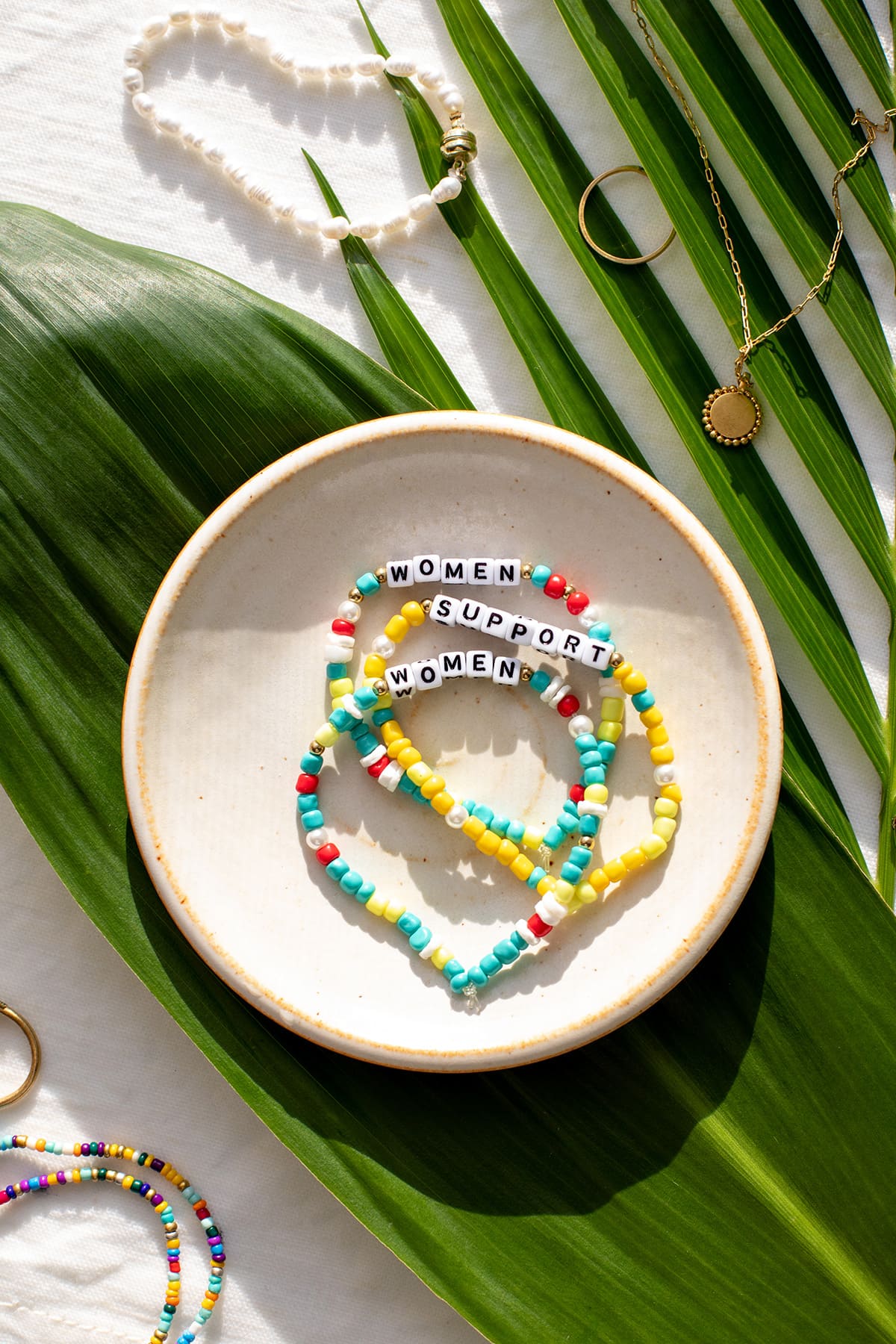Beading bracelets is a creative and fulfilling craft that allows you to design personalized pieces of jewelry. With an array of materials and techniques available, beading offers endless possibilities for expressing your unique style. Consequently, mastering the art of beading can enrich your crafting skills and provide beautiful accessories. Therefore, this comprehensive guide explores essential tools, popular techniques, types of beads, and tips for successful beading. By understanding these elements, you can confidently embark on your journey to create stunning beaded bracelets.
Essential Tools for Beading Bracelets
To start your beading journey, it is essential to gather the right tools. Understanding these tools ensures a smooth and enjoyable crafting experience. Therefore, exploring essential tools for beading bracelets is crucial.
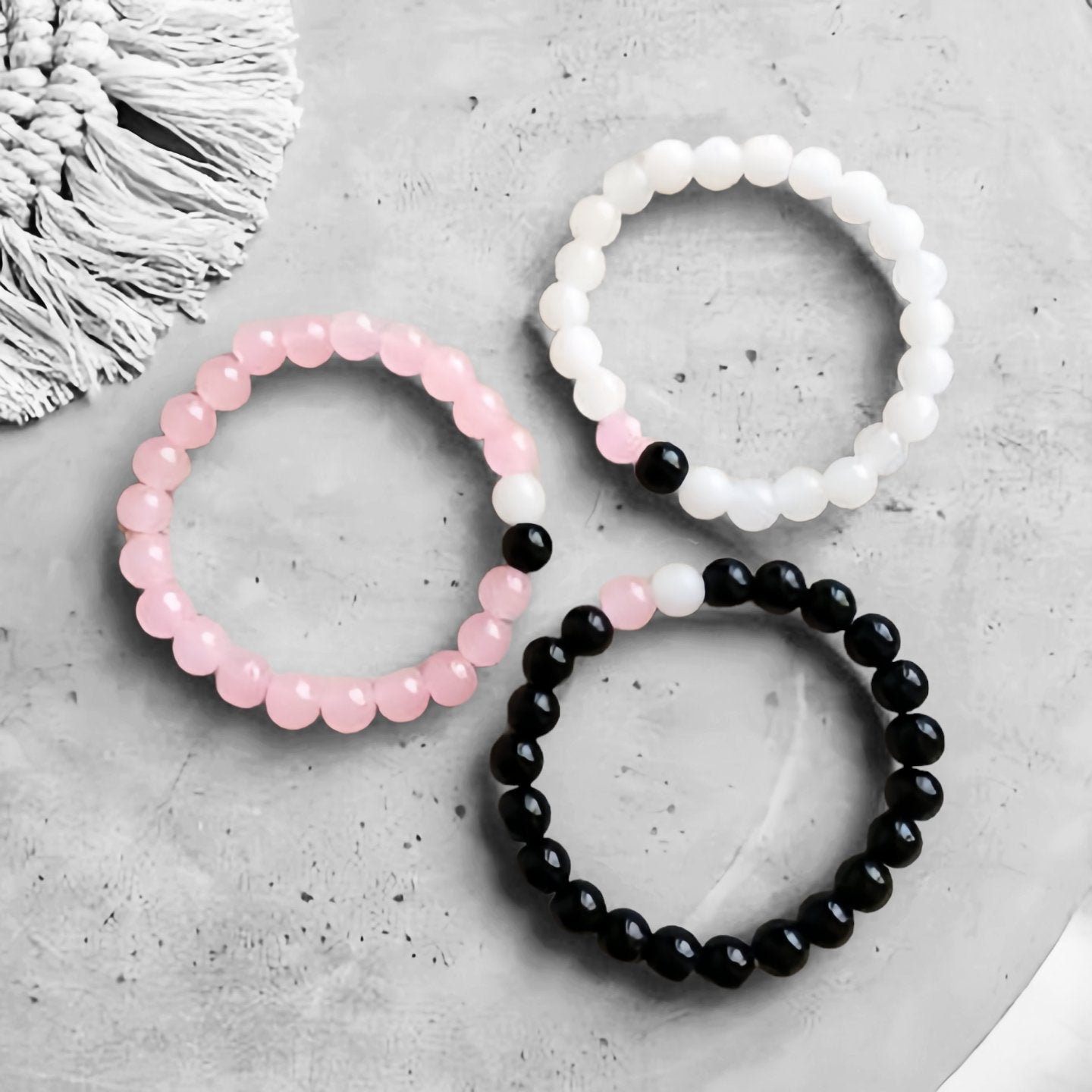
Beading Needles
Beading needles are thin, flexible needles designed specifically for threading beads onto beading thread or wire. These needles come in various sizes, catering to different bead hole sizes and threading requirements. A good selection of beading needles will make your beading process more efficient, especially when working with small or delicate beads. By understanding the importance of beading needles, you can choose the right ones for your projects. Therefore, recognizing the value of proper tools is crucial.
Pliers
Pliers are indispensable tools in the beading process, offering precision and control for various tasks. Round-nose pliers are perfect for creating loops and curves, flat-nose pliers provide grip for holding and bending, and cutting pliers are used for snipping wires and threads. Ensuring you have a complete set of pliers will make your beading projects easier and more accurate. By understanding the different types of pliers, you can utilize them effectively. Therefore, recognizing the importance of versatile tools is essential.
Beading Mats and Trays
Beading mats and trays help organize your workspace and keep beads from rolling away. A beading mat provides a soft surface, preventing beads from slipping while offering comfort for prolonged work. Bead trays with compartments help sort and hold different beads, making them easily accessible. By understanding the benefits of beading mats and trays, you can maintain an organized and efficient workspace. Therefore, recognizing the value of organization tools is crucial.
Popular Techniques for Beading Bracelets
Several techniques can be employed to create beautiful beaded bracelets. Understanding these methods helps you choose the right approach for your designs. Therefore, exploring popular techniques for beading bracelets is essential.
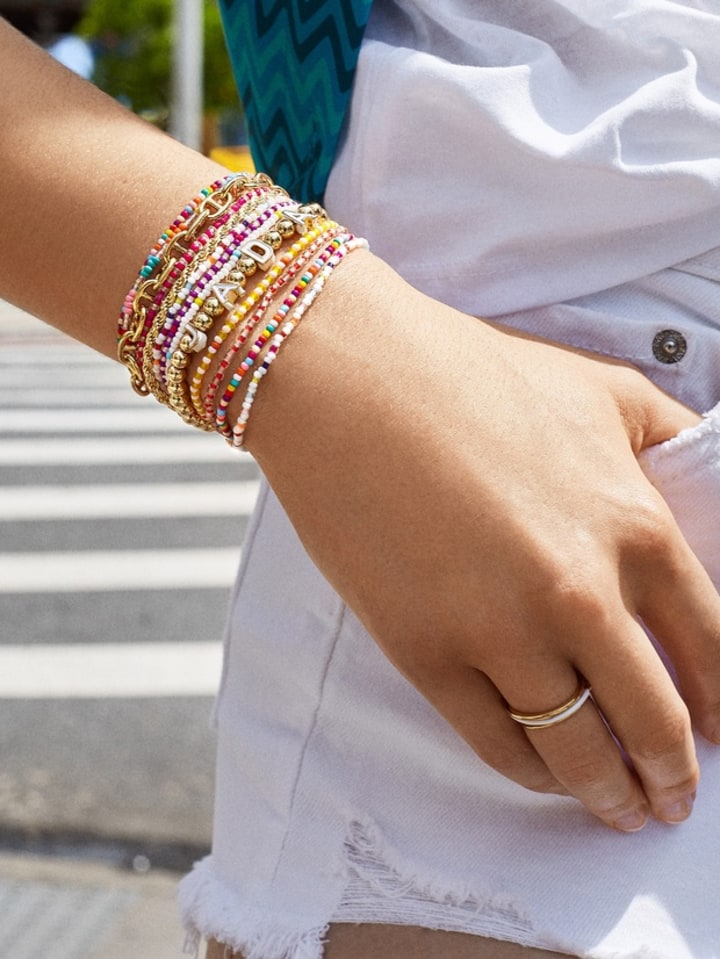
Stringing
Stringing is one of the simplest and most common beading techniques, ideal for beginners. This method involves threading beads onto a flexible string or wire to create a continuous strand. Various materials, such as beading wire, elastic cord, and nylon thread, can be used based on the desired flexibility and strength. Stringing allows for creativity in bead arrangement and simplicity in execution. By understanding the basics of stringing, you can start your beading journey with ease. Therefore, recognizing the value of fundamental techniques is essential.
Bead Weaving
Bead weaving involves interlocking beads together using a needle and thread. This intricate technique allows for creating complex patterns and designs, adding texture and dimension to your bracelets. Popular bead weaving methods include peyote stitch, brick stitch, and right-angle weave. These techniques require patience and precision but yield stunning results. By understanding bead weaving techniques, you can elevate your beading skills and create intricate designs. Therefore, recognizing the significance of advanced methods is crucial.
Wire Wrapping
Wire wrapping combines beads and wire to create sturdy and decorative elements within your bracelet designs. This technique involves wrapping wire around beads and connecting them using different wrapping styles. Wire wrapping can add an elegant, handcrafted touch to your bracelets and allows for various creative possibilities. By understanding the fundamentals of wire wrapping, you can introduce intricate designs and durability to your projects. Therefore, recognizing the value of wire wrapping is essential.
Types of Beads for Bracelets
Choosing the right beads is critical to achieving the desired look and feel for your bracelets. Understanding different bead types helps you select appropriate materials for your designs. Therefore, exploring the types of beads for bracelets is crucial.
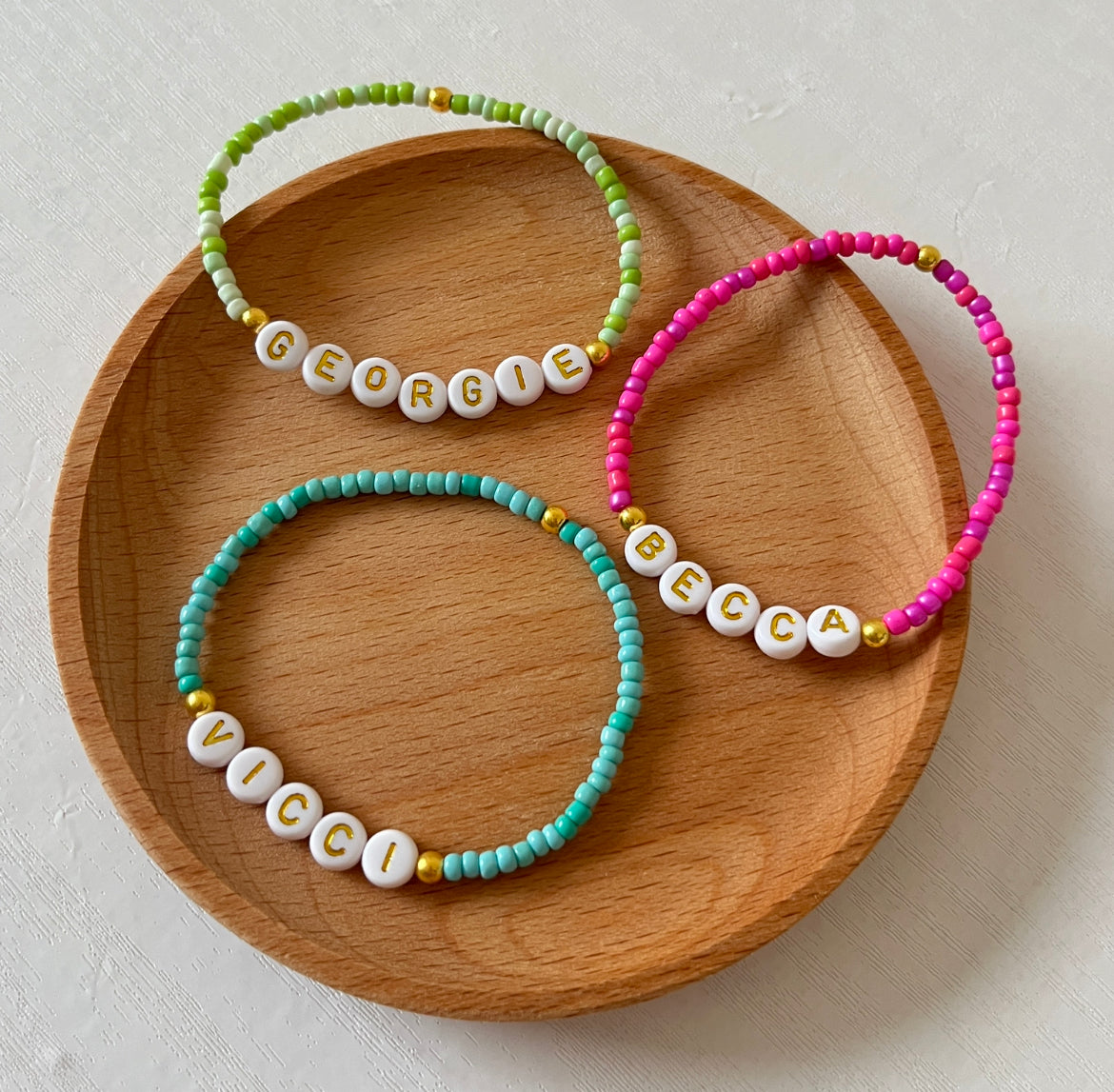
Seed Beads
Seed beads are small, uniformly shaped beads often used in bead weaving and embroidery. They come in various sizes, ranging from very tiny (size 15/0) to larger ones (size 6/0). Seed beads are available in an extensive range of colors and finishes, including metallic, matte, and transparent. Their versatility and consistency make them ideal for detailed patterns and intricate designs. By understanding the properties of seed beads, you can incorporate fine details into your bracelets. Therefore, recognizing the importance of seed beads is crucial.
Gemstone Beads
Gemstone beads add an element of natural beauty and elegance to your bracelets. These beads are made from various precious and semi-precious stones, such as amethyst, turquoise, jade, and rose quartz. Each gemstone has unique colors, textures, and healing properties, making them popular choices for personalized jewelry. By understanding the characteristics of gemstone beads, you can create meaningful and sophisticated designs. Therefore, recognizing the value of gemstone beads is essential.
Glass Beads
Glass beads offer a wide variety of shapes, sizes, and colors, making them versatile for different designs. Popular types include Czech glass beads, lampwork beads, and seed beads. Glass beads can be transparent, opaque, or contain intricate patterns and details. Their reflective properties add shimmer and shine to your bracelets. By understanding the diversity of glass beads, you can utilize them creatively in your projects. Therefore, recognizing the importance of glass beads is crucial.
Wooden Beads
Wooden beads provide a natural and rustic aesthetic, often used in bohemian and earthy designs. These beads are lightweight, making them comfortable to wear. Wooden beads come in various shapes and sizes, and they can be painted, stained, or left natural. By understanding the appeal of wooden beads, you can introduce organic elements into your bracelets. Therefore, recognizing the value of wooden beads is essential.
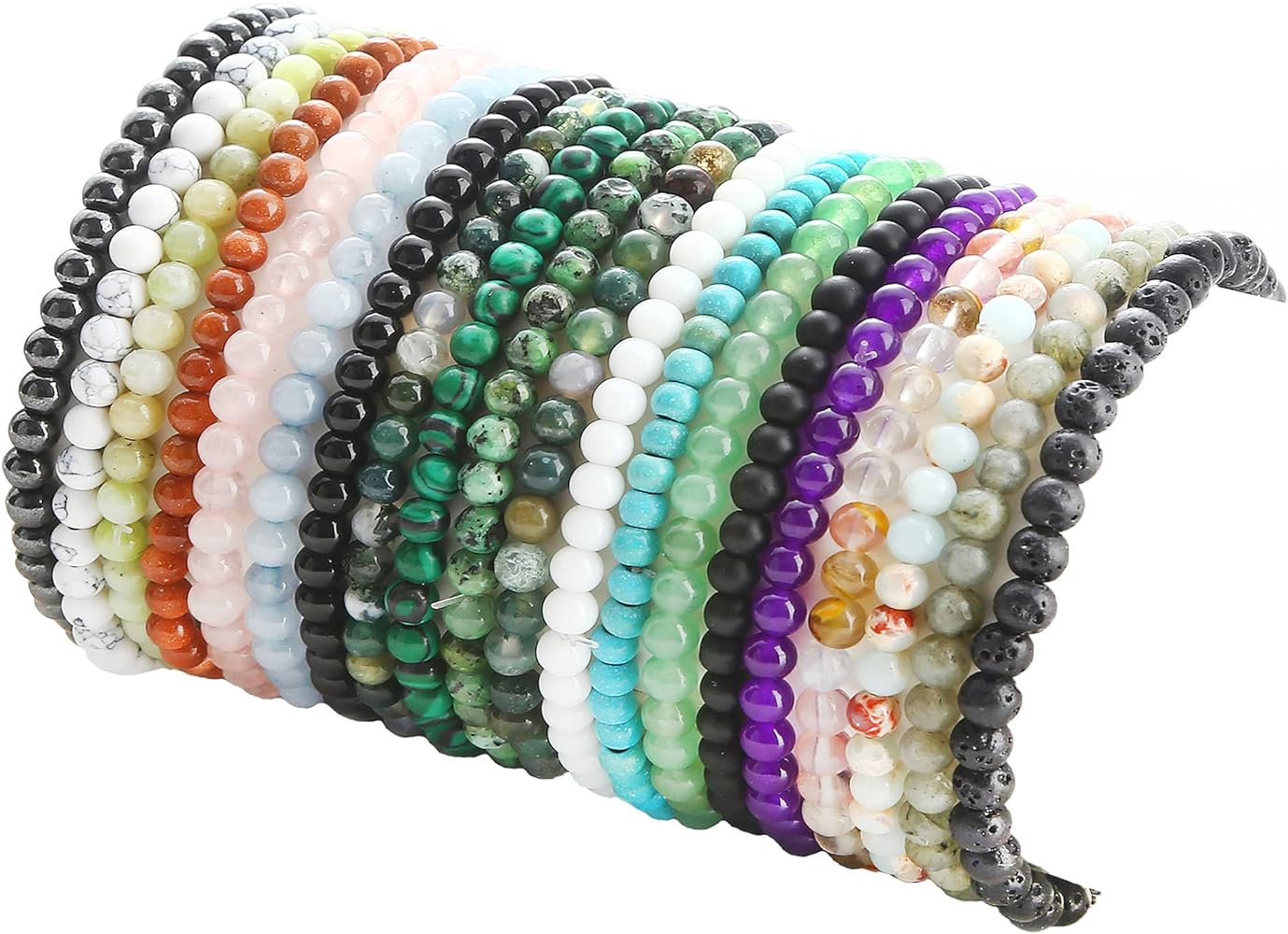
Tips for Successful Beading
To ensure a successful beading experience, it is helpful to follow certain tips and best practices. Understanding these tips enhances the quality and durability of your bracelets. Therefore, exploring tips for successful beading is essential.
Plan Your Design
Before starting your beading project, plan your design meticulously. Sketch your ideas on paper, select your beads and materials, and arrange them before stringing. Planning helps you visualize the final product and make adjustments if needed. By understanding the importance of design planning, you can achieve cohesive and aesthetically pleasing results. Therefore, recognizing the value of preparation is crucial.
Secure Your Ends
Ensuring that your bracelet ends are securely fastened prevents beads from coming loose and maintains the integrity of your design. Use crimp beads, knots, or bead tips to secure the ends of your bracelet. Double-check the strength and durability of these closures to avoid unexpected breakage. By understanding the importance of securing ends, you can create long-lasting and reliable bracelets. Therefore, recognizing the significance of secure closures is crucial.
Practice Proper Technique
Practicing proper techniques, such as tension control in bead weaving and even spacing in stringing, is vital for achieving professional results. Consistent practice improves your precision and confidence in your beading skills. Additionally, seeking tutorials and attending workshops can provide valuable insights and guidance. By understanding the importance of technique practice, you can refine your skills and enhance the quality of your bracelets. Therefore, recognizing the value of continuous learning is essential.
Experiment with Patterns and Colors
Be bold in experimenting with patterns and colors to create unique and eye-catching designs. Mix and match different bead shapes, sizes, and finishes to add variety and depth to your bracelets. Play with color palettes, from complementary hues to contrasting shades, to find combinations that resonate with your style. By understanding the importance of creativity, you can develop distinct and personalized designs. Therefore, recognizing the value of experimentation is crucial.
Maintain Clean and Tidy Workspace
Maintaining a clean and tidy workspace is essential for an efficient and enjoyable beading experience. Organize your beads, tools, and materials, keeping them within easy reach. Regularly clean up your workspace to avoid clutter and prevent losing small beads or tools. By understanding the importance of an organized workspace, you can enhance your productivity and focus on your beading projects. Therefore, recognizing the value of organization is essential.
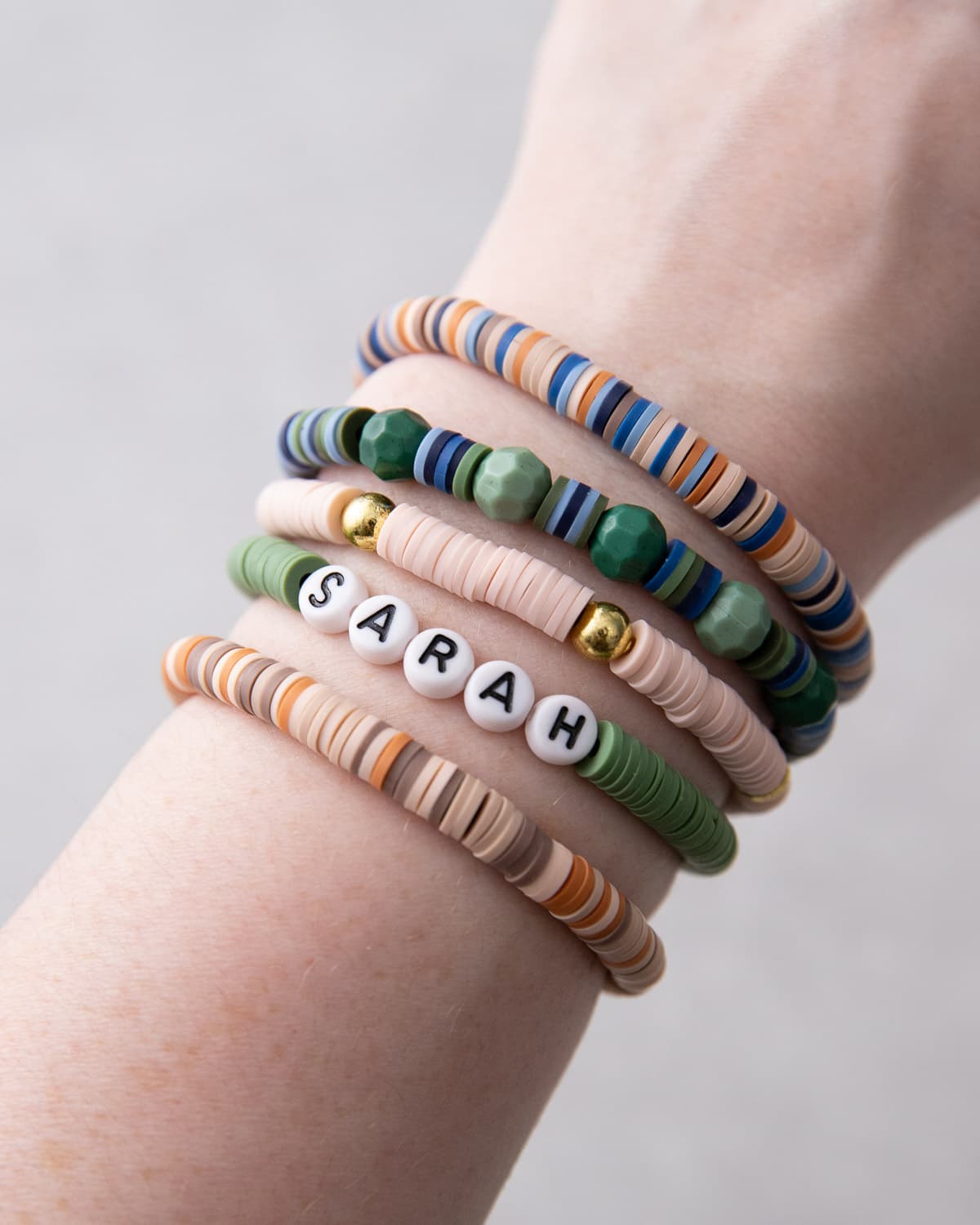
Addressing Common Questions About Beading Bracelets
Understanding common questions about beading bracelets provides additional clarity and guidance for your projects. Knowledge of these answers ensures a more informed and successful beading experience. Therefore, exploring common questions is essential.
What Stringing Material Should I Use?
A common question is about the best stringing material for beading bracelets. The choice depends on the design, bead type, and desired flexibility. Beading wire offers durability and strength, suitable for heavier beads. Elastic cord provides flexibility and ease of wear, ideal for stretch bracelets. Nylon thread is versatile and works well with most bead sizes and types. By understanding the properties of different stringing materials, you can select the most suitable one for your projects. Therefore, recognizing the importance of material choice is crucial.
How Do I Prevent Beads from Falling Off?
Another common question is how to prevent beads from falling off the bracelet. To secure beads, ensure proper knotting, use crimp beads, or apply bead tips at the ends. Double-check the strength and integrity of these closures before finishing your bracelet. Additionally, using a small bead of glue at the knot can provide extra security. By understanding the methods to prevent bead loss, you can create durable and reliable bracelets. Therefore, recognizing the importance of secure closures is essential.
Addressing Common Misconceptions About Beading Bracelets
Addressing common misconceptions about beading bracelets provides accurate information and dispels unwarranted concerns. Clearing up misunderstandings ensures an informed perspective. Therefore, exploring common misconceptions is important.
Misconception: Beading Is Only for Jewelry Professionals
A common misconception is that beading is only for professional jewelry makers. In reality, beading is an accessible craft enjoyed by individuals of all skill levels. Beginners can start with simple projects and gradually progress to more complex designs. The beading community is welcoming and supportive, offering resources and guidance for learners. By understanding the accessibility of beading, you can confidently start your journey regardless of your experience. Therefore, dispelling this misconception highlights the inclusivity of beading.
Misconception: High-Quality Beads Are Always Expensive
Another misconception is that high-quality beads are always expensive. While some premium beads may come at a higher cost, there are affordable options that do not compromise quality. Shopping during sales, buying in bulk, or considering alternative materials can help you find beautiful beads within your budget. By understanding the range of bead prices, you can make informed decisions and find quality materials at reasonable costs. Therefore, dispelling this misconception emphasizes the affordability of beading.
Conclusion: Embracing the Art of Beading Bracelets
Embracing the art of beading bracelets involves understanding essential tools, popular techniques, types of beads, and practical tips. Proper knowledge of these aspects ensures a comprehensive and enjoyable beading experience.
Exploring critical elements such as stringing, bead weaving, and wire wrapping provides comprehensive knowledge and practical approaches. Recognizing the importance of planning, securing ends, practicing proper techniques, and maintaining an organized workspace enhances overall productivity and satisfaction with your projects.
By engaging with these elements, you can create stunning and personalized beaded bracelets, expressing your unique style and creativity. Therefore, whether you are a seasoned beader or a newcomer, understanding beading bracelets offers practical and valuable insights. Embrace the opportunity to explore and develop your skills, knowing you have the knowledge and resources to make informed choices for successful beading!
